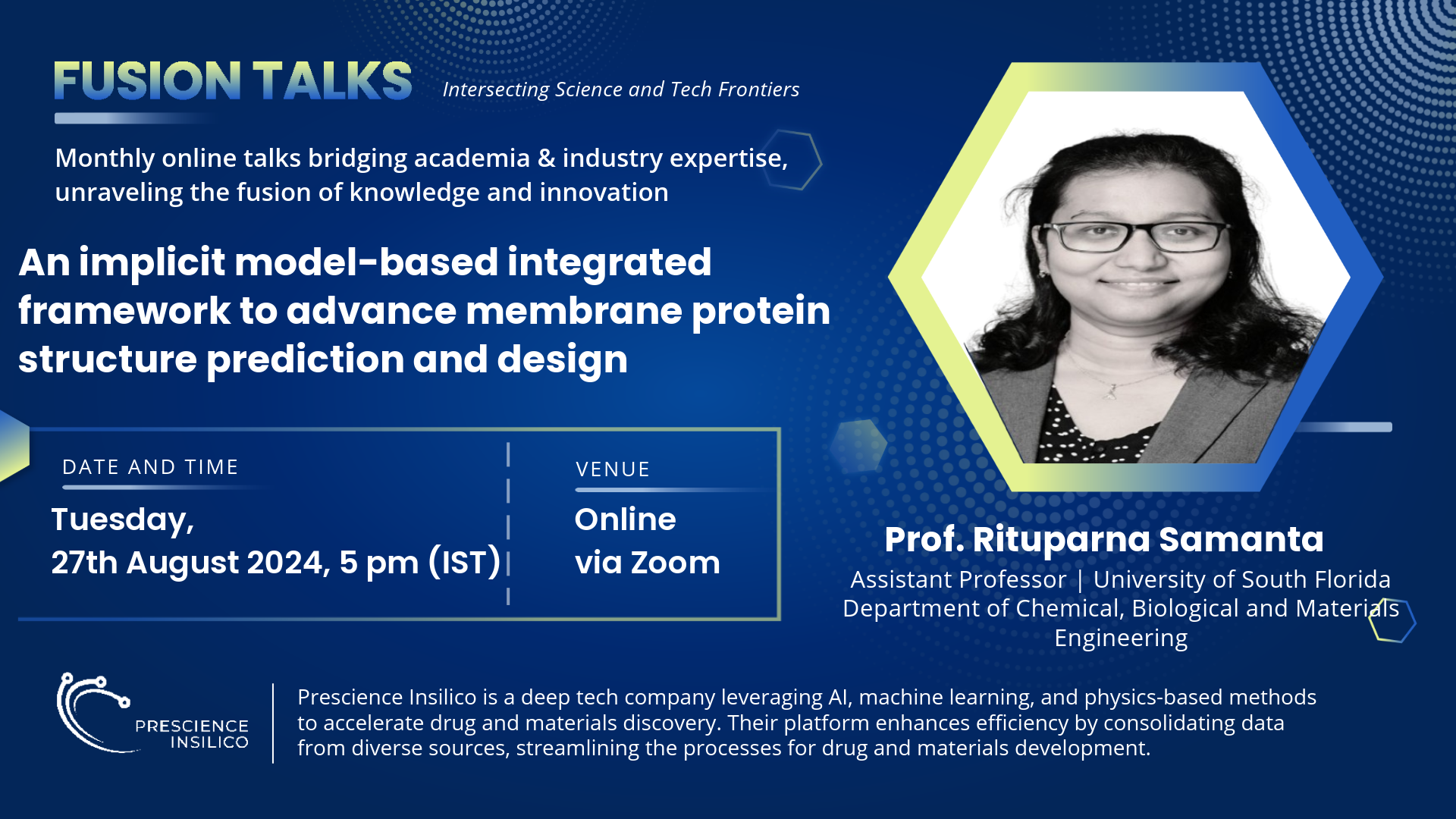An implicit model-based integrated framework to advance membrane protein structure prediction and design
This event was successfully completed
Event Date:
August 27 - August 27, 2024
Application Area: Drug Discovery, Biotechnology

About the Speaker:- Rituparna Samanta is an assistant professor at the Department of Chemical, Materials, and Biological Engineering at the University of South Florida in Tampa, Florida. Her newly formed research group develops and uses computational tools to engineer beyond soluble proteins. She was a postdoc at Johns Hopkins University, where her research focused on developing tools to study proteins and their design. Prior to this, she earned her Ph.D. from the University of Texas at Austin, where her primary research interest was studying the phase behavior of self-assembled globular proteins and polymers and the effect of their physical properties on the complexes. She spent the formative years of her career in India, where she graduated with a bachelor’s degree in chemical engineering from Jadavpur University and a master's degree from the Indian Institute of Technology Kanpur, respectively. She has authored and co-authored several articles in renowned journals and conferences.
Abstract:- Membrane proteins play a critical role in our body and are targets for over half of all approved drugs. Protein design is a powerful tool for elucidating mechanisms of function and engineering new therapeutics and nanotechnologies. Although soluble protein design using computational methods has advanced, membrane protein design lag because of the complexity of lipid bilayers and sparse and low-quality data.
Implicit models accelerate this complex biomolecular problem by representing the environment as a continuous medium. However, the challenge lies in adding realistic features of the membrane environment and evaluating its ability to capture experimental observations. In this talk, I will first share our efforts to develop an implicit approach that captures the anisotropic structure, shape of water-filled pores, and electrostatic features of different lipid layers. Additionally, I will follow up with several case studies in tilt angle prediction, design, and protein-protein interface prediction. Our method advances high-resolution membrane protein structure prediction and design toward tackling key biological questions and engineering challenges.
